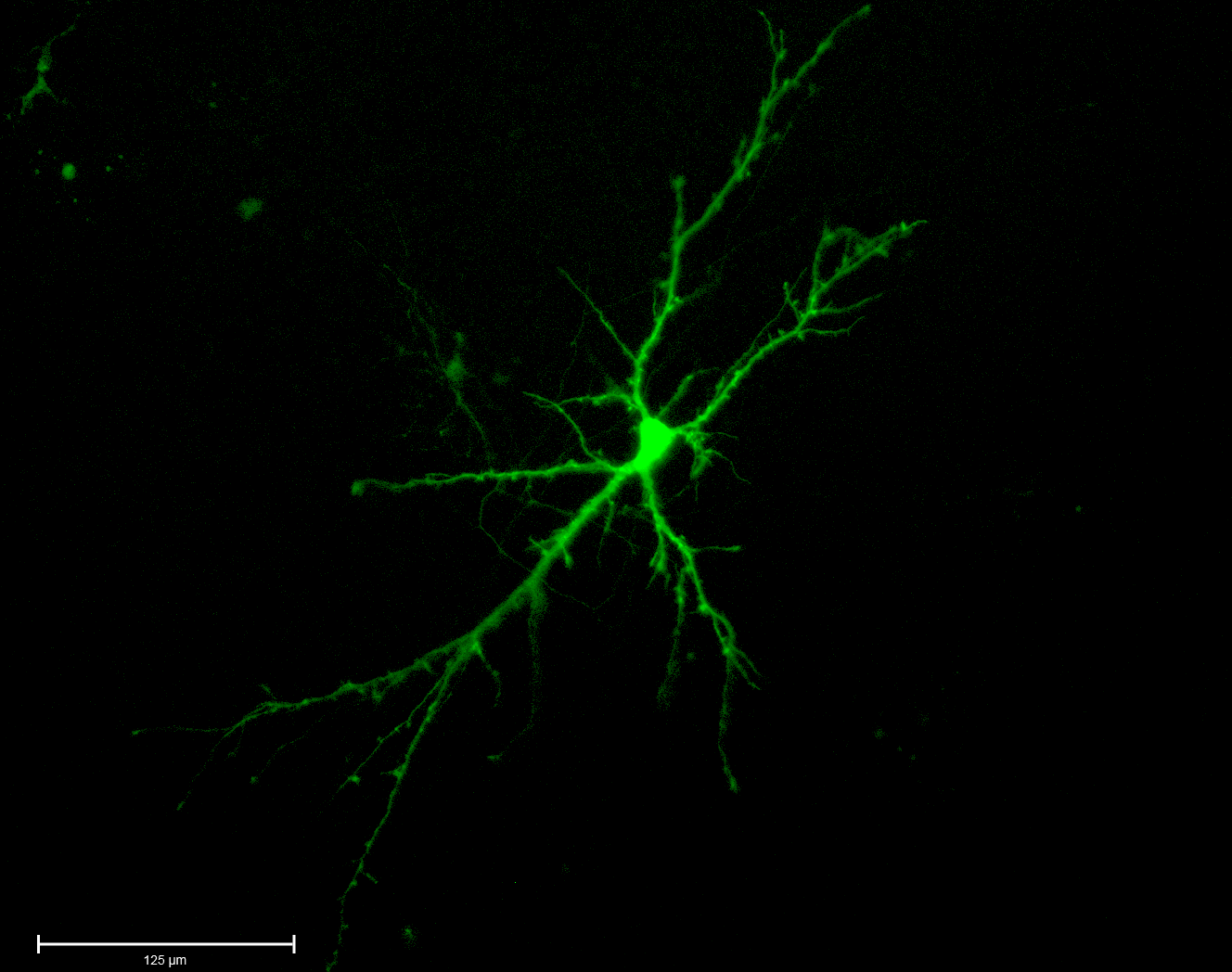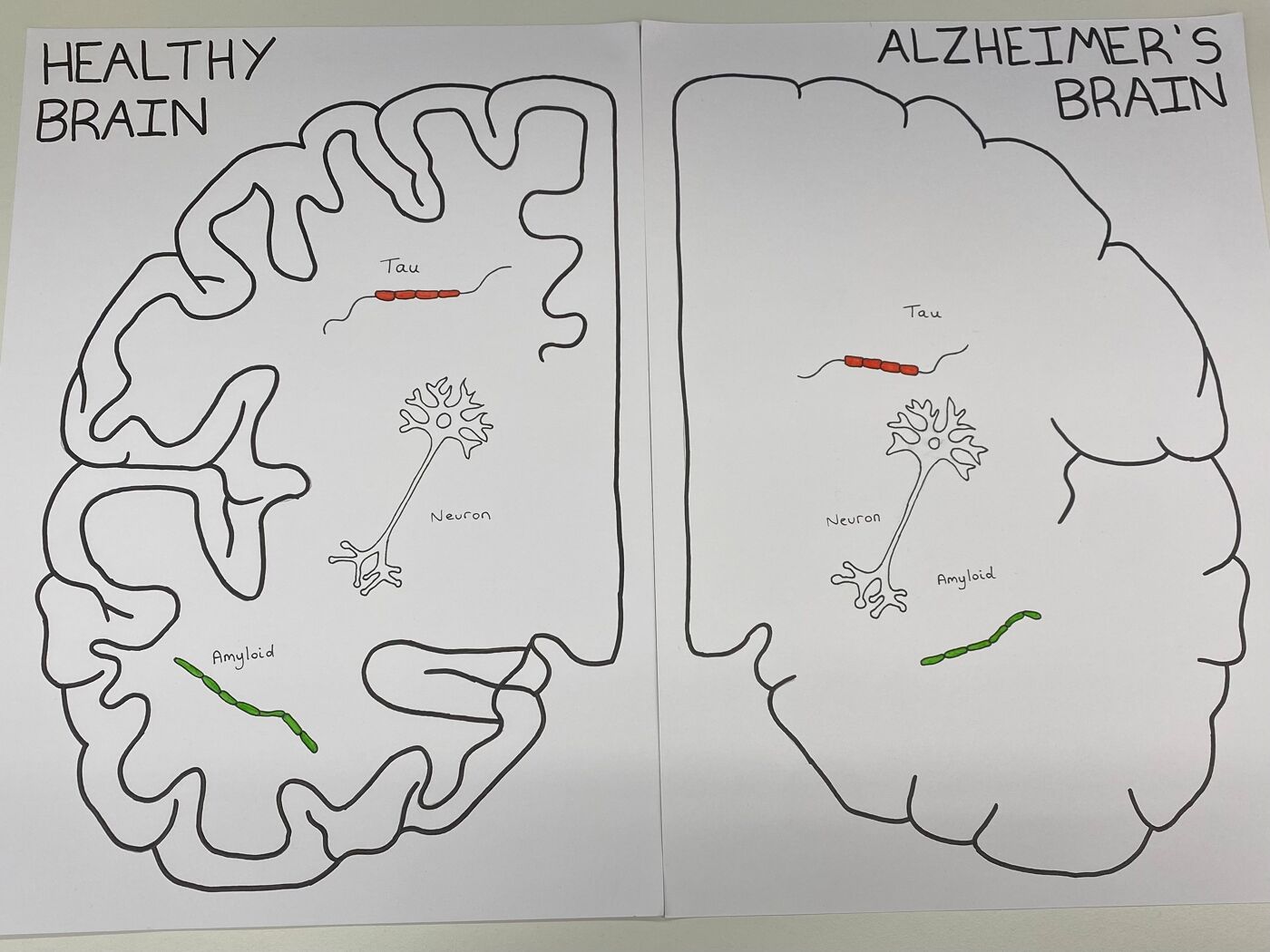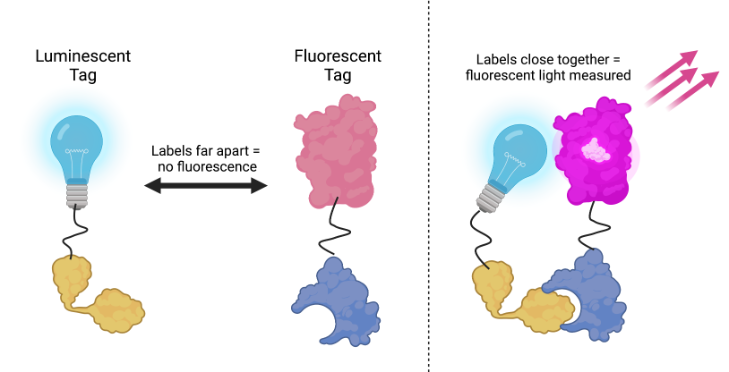Glowing Science
Join members of the Centre for Translational Pharmacology as we share how glowing proteins help us discover new medicines!
Light-emitting proteins can be found naturally in species such as jellyfish and fireflies. In the lab, these fluorescent and bioluminescent proteins can help us visualise structures and processes inside living cells. We can use these proteins to design biosensors which can measure biological activity in real time. Understanding differences in activity between healthy and diseased cells can help us develop new medicines to fix these signals.

A neuron, or brain cell, expressing a green fluorescent protein. Image credit - Beth Strellis.
Our Activities

Graffiti Wall
Learn about fluorescence through the science of invisible ink and express yourself (invisibly) on our graffiti wall!

Cell Sorting
Our bodies are made up of trillions of cells, so as scientists we can use fluorescent proteins, dyes and stains to help us label specific cells of interest. Can you find all of our labelled cells in the ball pit? Race against the clock to reach the top of our leaderboard!

Drug Detectives
We can use fluorescent proteins to look for clues which help us understand diseases and develop new medicines to make people better. Use the UV torch to find the differences between healthy and diseased tissues, then unscramble the letters to make a word!
Frequently Asked Questions
What is Fluorescence?
The electromagnetic spectrum is made up of visible light (red, orange, yellow, green, blue, indigo & violet) and invisible light (e.g. ultraviolet, x-rays, infrared). Each type of electromagnetic radiation has a different wavelength. For example, red light has a longer wavelength than violet light.
Fluorescence is the emission of light by a substance, object (gemstones), plant or animal (jellyfish, corals) that has absorbed light of a particular wavelength, and then releases light of a different wavelength. In most cases, fluorescent objects absorb light of a shorter wavelength and emit light at a longer wavelength. This is because the emitted light has less energy than the one that was absorbed. There are, however, exceptions to this rule.
Fluorescence is a useful concept for scientific research and has become widely used in a variety of research areas such as cell biology, physiology and chemistry. Most commonly, fluorescent dyes and labels can be used to let scientists ‘see’ different molecules, structures or cell types.
What is Bioluminescence?
Bioluminescence is when light is released by a chemical reaction inside a living organism. Bioluminescent proteins have been found in many creatures such as fireflies, sea shrimp and bacteria.
The energy for bioluminescence is provided by a substrate called luciferin interacting with an enzyme and producing light as a byproduct of a chemical reaction. This is different from fluorescence where the energy is provided by a different wavelength of light.
Bioluminescent proteins are also used extensively in scientific research in techniques such as BRET.
How does invisible ink work?
Invisible ink is a great example of fluorescence!
Remember, fluorescence means a substance can absorb light of one particular wavelength (or colour) and release light of a different wavelength.
When invisible ink is exposed to normal visible light we can’t see anything, but the ink can absorb invisible ultraviolet light from a UV torch and emit a different wavelength of light that we can see.

What is BRET?
BRET (Bioluminescent Resonance Energy Transfer) is a technique we can use to measure interactions between molecules inside living cells. This is important as it can help us understand how cells behave during disease, and how to find new, better medicines.
We label one molecule with a luminescent protein which gives off light like a torch, and label another molecule with a fluorescent protein like invisible ink. When the labels are far apart we can’t see any fluorescence, but if the two molecules interact energy transfer occurs and we can measure the fluorescent light which is released.

How can we get involved?
If you are interested in having Glowing Science at your school or event, you can find our offer on the STEM Ambassadors platform.
Our activities are best suited to a table-top science festival-type event, where we can engage several small groups of students or families for 10-15 minute intervals.
Acknowledgements
This activity was created for Glasgow Science Festival 2022 as part of the GSF in Action training course in collaboration with Dr. Deborah McNeill. Our thanks to Rebecca, Danielle, Elaine, Tian and Elena who developed the original activity.
Funding was later obtained from the MVLS Engagement Fund to allow the Hudson Group in the Centre for Translational Pharmacology to create a reusable activity kit for members of the pharmacology group to use at ARCadia and other future events. Thanks to Beth, Elaine, Beth, Luca, Becca and Brian for their contributions.


